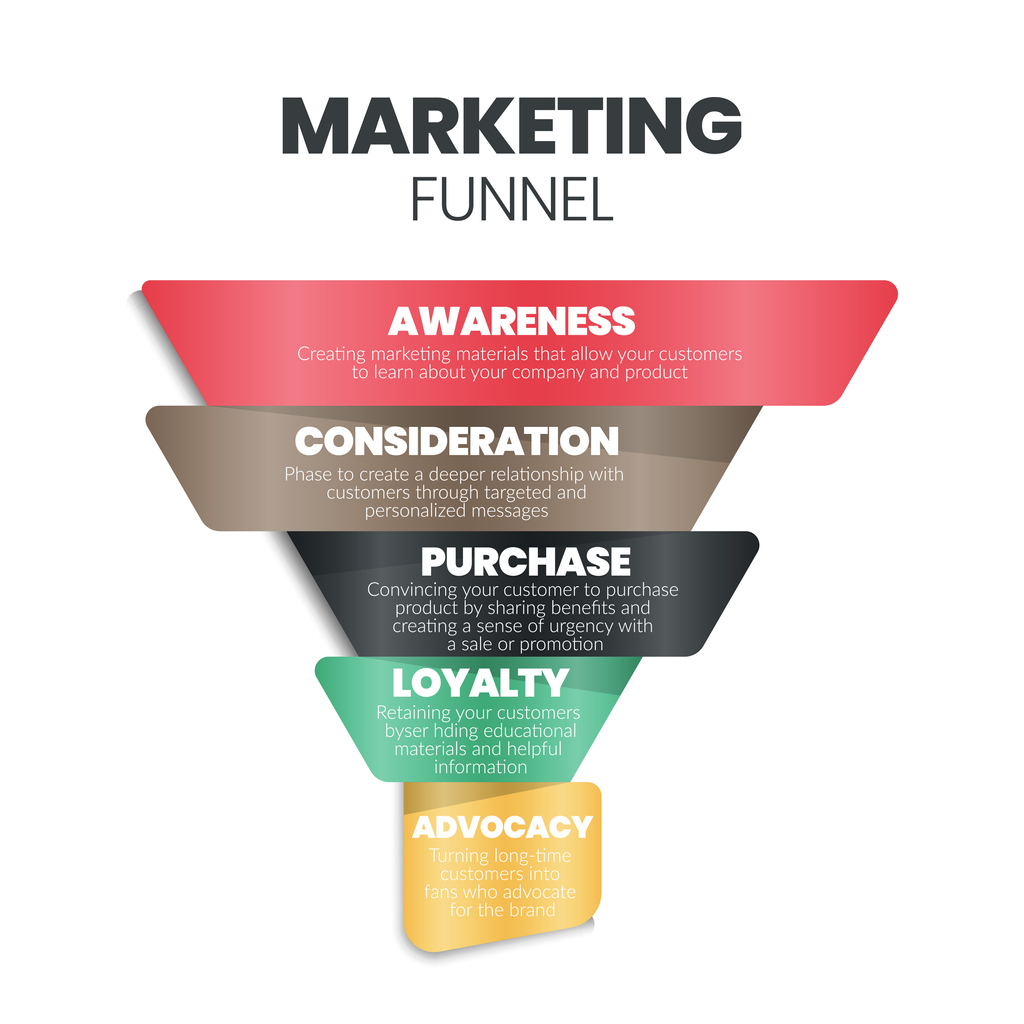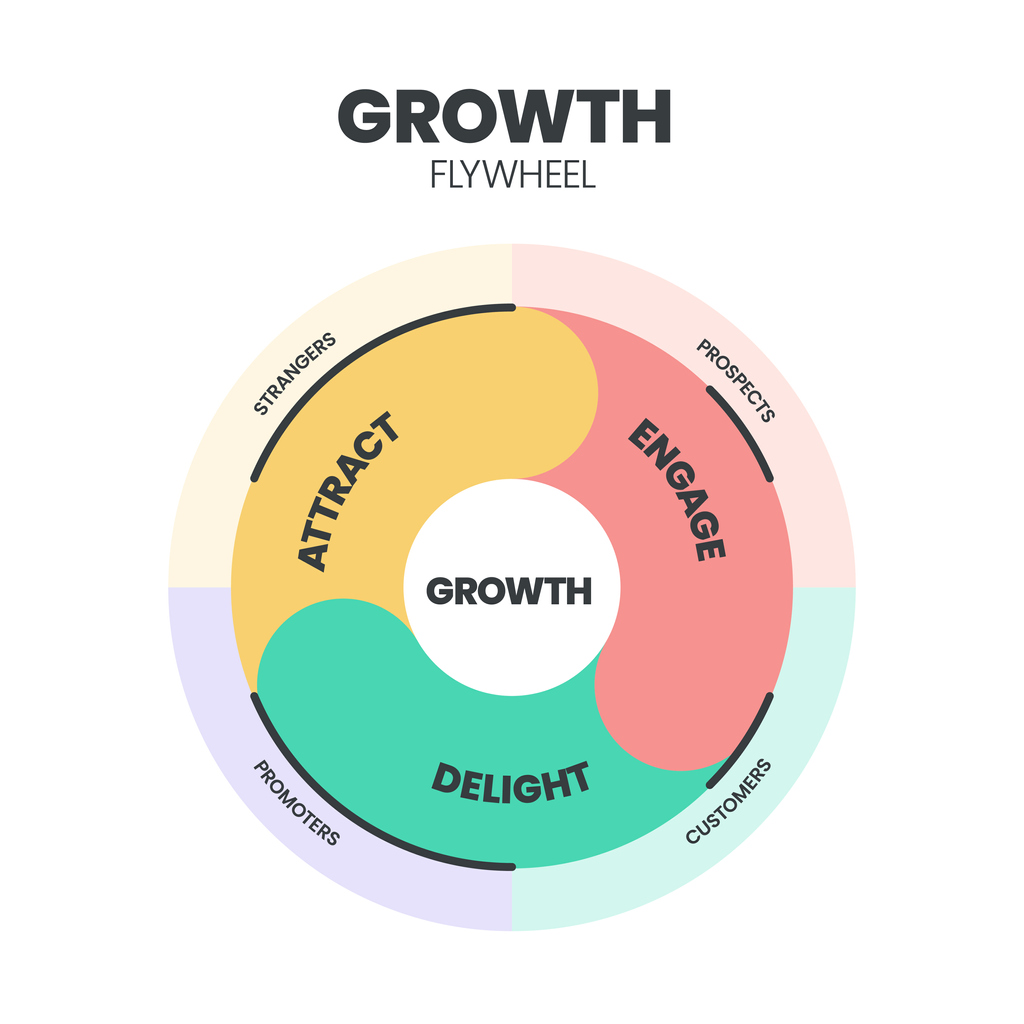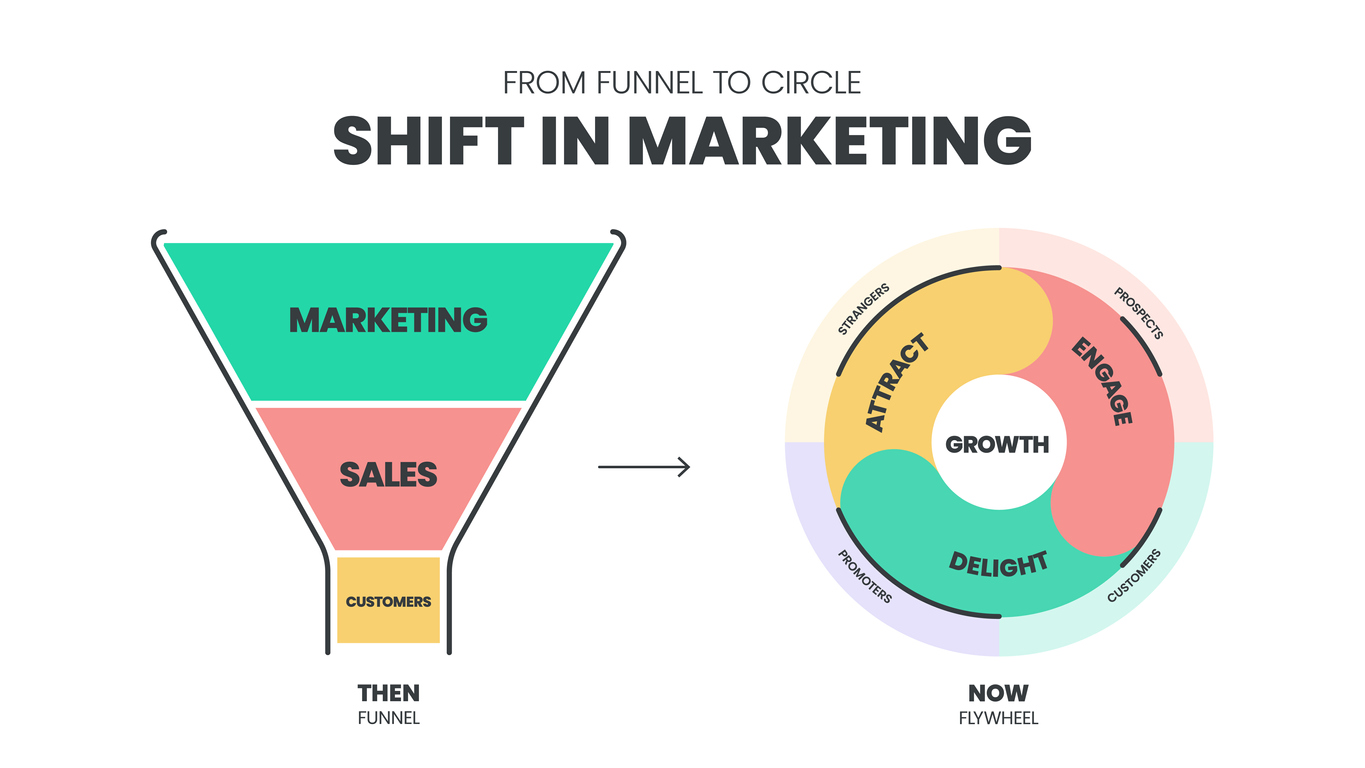How strong is your conversion strategy?
The consumer world has changed.
The traditional marketing sales funnel – at the helm of successful marketing strategies for decades – is now a flywheel.
Why? Because purchase decision-making journeys have evolved in today’s content-rich digital world.
The marketing sales funnel fails to consider today’s buyer experiences.
Instead it focuses on outcomes and relies largely on ‘often pushy’ outbound marketing tactics, such as advertising and emails.
The flywheel focuses on prospect and customer experiences, adding value through inbound marketing tactics, such as viral social media posts and SEO-optimised website content.
Basically, your audience finds you. Because you’re producing timely, relevant and engaging content, personalised to their needs.
Customer experience matter. Brands that are truly customer-centric are 60% more profitable compared to those that aren’t.
Confused? Let’s start from scratch.
What is a sales funnel or flywheel?
The sales funnel or flywheel mirror the decision-making journey your customers go through, from first knowing about your brand to making a purchase.
The models enable you to tailor your channel choices, messaging and content to what your prospects want and need at each step.
Why does that matter? Because it increases sales.
If your sales funnel or flywheel is strong, eg. you have lots of prospects moving through it, you’re doing a great job of getting your prospects to fall in love with your brand.
If not, you’re losing them to your competition.
Think about building a relationship with your customers the way you think about building a new romantic relationship. The basic principles are the same.
The more you understand and respond to your prospects’ needs at each point of their journey, the closer your bond will become.
And the more loyal customers you’ll gain.
Read on to discover more.
Sales funnel explained
The traditional sales funnel is a pyramid with different stages that correlate to the different stages of conversion.
Marketing conversion funnelThe wide top allows in many prospects. But this group gets smaller as they move down the pyramid.
It outlines key phases, from initial awareness of your brand to consideration, conversion (sale), loyalty (repeat purchase) and advocacy.
It’s been a trusted model since 1898 (E St Elmo Lewis). But that was almost 100 years before the internet launched in 1983.
A lot’s changed since then.
Flywheel explained
HubSpot adapted the flywheel model after realising that the typical sales funnel wasn’t focused on customer experiences, for example. The inbound marketing flywheel model advances prospects to promoters using friction-free content that delivers value without any fuss. Hubspot.com, 2023
The flywheel was designed in response to digital consumption trends.
It recognises that brand experiences are the most important thing for success. And that when prospects and customers experience the value they expect, they’ll do your marketing for you – pre and post-purchase.
When they’re not, they’ll go elsewhere.

You see, customers have a lot of power.
With access to extensive online information, including social networks and review sites, they can get their digital experience needs met in seconds.
They engage with what they want to, when they want to. And they spend a lot of time researching.
To deliver truly great experiences, you need to focus on what your buyer wants and eliminate the obstacles in the way.
The flywheel model considers both factors.
It helps savvy brands to generate a steady stream of leads and prospects in this fast-moving digital world.
It’s cyclical, so if you get things right, the wheel spins freely and maintains momentum.
This means providing a fluid and enjoyable content experience for your prospects and customers.
If you don’t, the wheel hits friction, slows down and eventually stops.
Any bump in the road could send frustrated buyers backward on their journey, affecting your entire conversion strategy.
Just like the sales funnel, all leads start out as strangers. You either attract them or they come in on word-of-mouth from those shouting about your brand.
Strangers then become prospects, providing you engage them to make that happen.
Delight them, and prospects convert. Continue delighting them and they become long-term champions for your brand.
Convert your sales funnel into a flywheel
You can transform your sales funnel into a flywheel in a few simple steps.
1. Define your flywheel
Simply translate your sales funnel processes and inbound marketing strategy for these elements:
- Your core KPIs – apply them to the flywheel stages.
- The forces (strategies, platforms, and content types) you already use – use these to attract, engage and delight your customers.
- The points of friction where buyers bounce or leave the process. These could be:
- dull and irrelevant content
- using the wrong channels
- inconsistent experiences between conversion stages
- an internal point of friction.
2. Refine your flywheel
When you’re examining your current processes, stop to ask yourself a few questions.
Keep what works and finesse it so it meets your needs. Don’t be afraid to ditch forces that don’t fit the flywheel (or move them to a stage where they do fit).
- Is this process for my own convenience or the customer’s needs?
- Does this discovery apply to the attract, engage, or delight flywheel stage?
- How can I update this process so it fits with each of the flywheel stages?
3. Foster delight with the right touchpoints
Inbound marketing is customer-focused at its core.
So your next step is to keep your flywheel moving forward through the provision of truly exceptional experiences.
- Tailor your content to your audience’s needs. Opportunities to cut through the noise are everywhere.
- Develop authentic and exciting content experiences, eg.
- harness the power of peer-to-peer content (user-generated content)
- maximise social influencers – these should be your customers
- delight your prospects by providing live chat support
- run a competition with exciting prizes
- develop content that your customers want and need to experience
Small changes will make a huge difference.
4. Zero in on friction points
Finally, examine your entire process from start to finish with a critical eye for friction.
Don’t forget that any change could introduce friction if it’s not 100% right, so review any remaining sources of friction again at the end.
- Build your inbound strategy around value-based content for the right buyer stage at the ideal time
- Collaborate with teams to provide a smooth transition across conversion points
- Manage customer communications via one person or team to ensure consistency
- Give customers a choice of paths throughout their journey, enabling them to take the steps they want to, when they want to
To discover more, visit www.hubspot.com/flywheel

